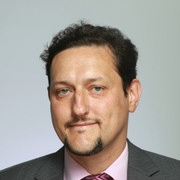The Applications of Plasma Techniques II
A special issue of Applied Sciences (ISSN 2076-3417). This special issue belongs to the section "Optics and Lasers".
Deadline for manuscript submissions: closed (20 February 2022) | Viewed by 16853
Special Issue Editor
Interests: development of microwave plasma sources; plasma diagnostics; applications of atmospheric pressure microwave plasmas; application of microwave plasma sources for hydrogen production; application of microwave plasma sources for destruction of harmful gases; application of microwave plasma for treatment of materials
Special Issues, Collections and Topics in MDPI journals
Special Issue Information
Dear Colleagues,
This Special Issue of the journal Applied Sciences is intended to provide a description of devices and processes related to plasma applications in the broad sense. Plasma is called the fourth state of matter because its properties differ significantly from those of gas. Plasma can be defined as a conductive medium generated by the ionization of gas. Thus, it occurs as a mixture of photons, electrons ,and ions, but it can also contain neutral atoms and molecules. The concept of plasma includes media with very different properties. Densities and kinetic energies of plasma components differ for various types of plasma by several or even more orders of magnitude. Hence, plasmas can have very different applications. Nowadays, plasma is very common in everyday life—from ubiquitous discharge lamps to plasma TVs. In technology, plasma is used in areas as diverse as gas purification, surface treatment of materials, and corrective drives for spacecraft. Its use is limited only by the price and availability of electricity. Readers interested in this modern field of science and technology are invited to enjoy this collection of articles, which will certainly excite the curiosity of both scientists and engineers interested in plasma applications. Moreover, the solutions presented may encourage entrepreneurs to implement them. I wish you a pleasant reading.
Prof. Mariusz Jasinski
Guest Editor
Manuscript Submission Information
Manuscripts should be submitted online at www.mdpi.com by registering and logging in to this website. Once you are registered, click here to go to the submission form. Manuscripts can be submitted until the deadline. All submissions that pass pre-check are peer-reviewed. Accepted papers will be published continuously in the journal (as soon as accepted) and will be listed together on the special issue website. Research articles, review articles as well as short communications are invited. For planned papers, a title and short abstract (about 100 words) can be sent to the Editorial Office for announcement on this website.
Submitted manuscripts should not have been published previously, nor be under consideration for publication elsewhere (except conference proceedings papers). All manuscripts are thoroughly refereed through a single-blind peer-review process. A guide for authors and other relevant information for submission of manuscripts is available on the Instructions for Authors page. Applied Sciences is an international peer-reviewed open access semimonthly journal published by MDPI.
Please visit the Instructions for Authors page before submitting a manuscript. The Article Processing Charge (APC) for publication in this open access journal is 2400 CHF (Swiss Francs). Submitted papers should be well formatted and use good English. Authors may use MDPI's English editing service prior to publication or during author revisions.
Keywords
- low-pressure plasmas
- atmospheric pressure plasmas
- DC and AC electrical discharges
- corona discharges
- glow discharges
- DBD discharges
- microplasmas
- gliding arc discharges
- RF electrical discharges
- microwave discharges
- plasma coating and treatment of surfaces
- plasma treatment of gases
- discharges in and on liquids
- plasmas in biomedical applications
- plasmas in nanotechnology
- characterization of plasma devices
- displays and lamps
- advanced and novel plasma technologies and sources
- other issues related to the applications of plasma techniques
Benefits of Publishing in a Special Issue
- Ease of navigation: Grouping papers by topic helps scholars navigate broad scope journals more efficiently.
- Greater discoverability: Special Issues support the reach and impact of scientific research. Articles in Special Issues are more discoverable and cited more frequently.
- Expansion of research network: Special Issues facilitate connections among authors, fostering scientific collaborations.
- External promotion: Articles in Special Issues are often promoted through the journal's social media, increasing their visibility.
- e-Book format: Special Issues with more than 10 articles can be published as dedicated e-books, ensuring wide and rapid dissemination.
Further information on MDPI's Special Issue polices can be found here.






